TRIBOLLET Aline webpage |
 |
| CONTACT |
CV
|
ARTICLES |
RESEARCH |
PROJECTS |
LAB |
LINKS |
GALLERY |
CORAL
REEF ECOLOGY & FUNCTIONING
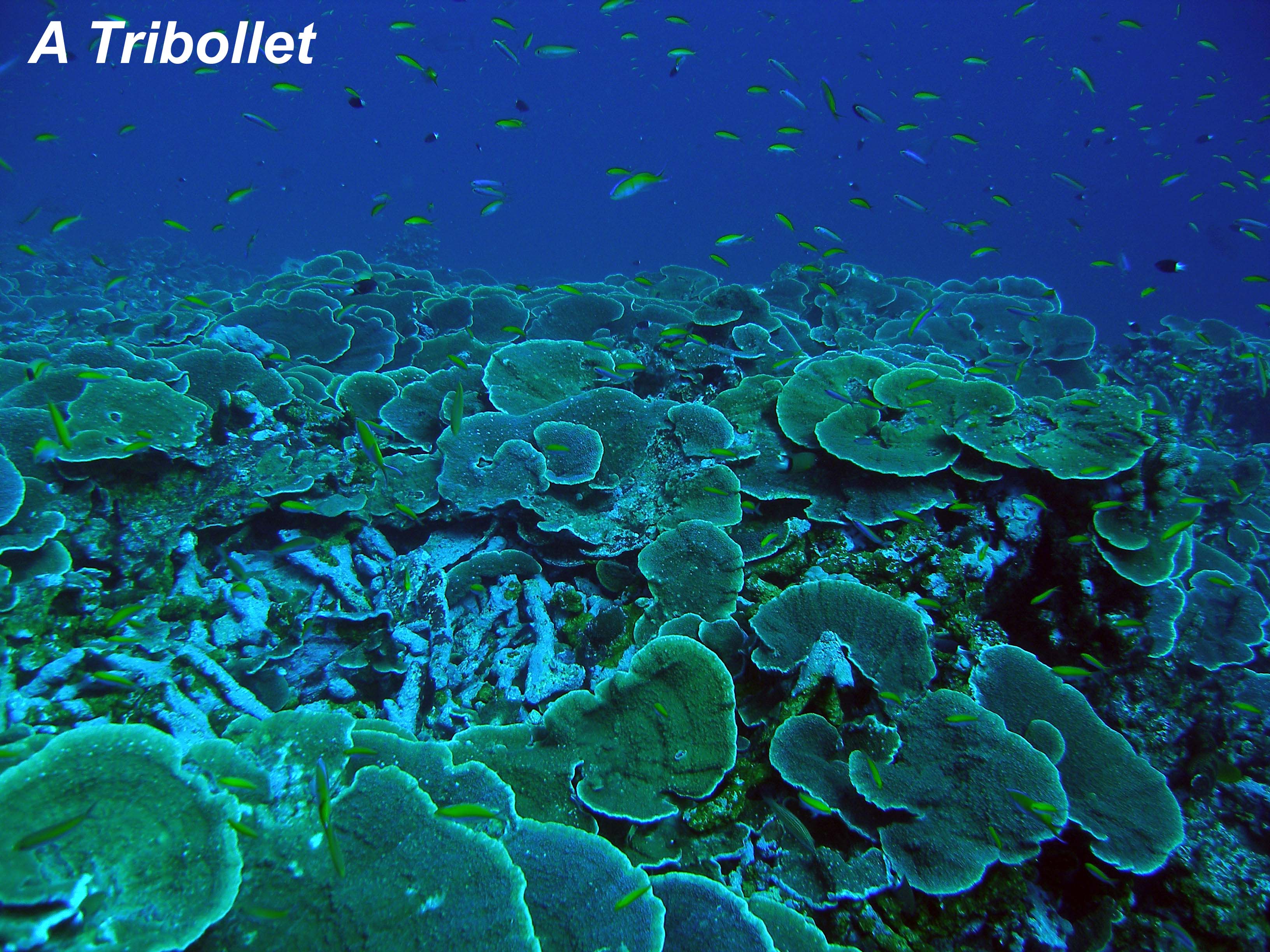
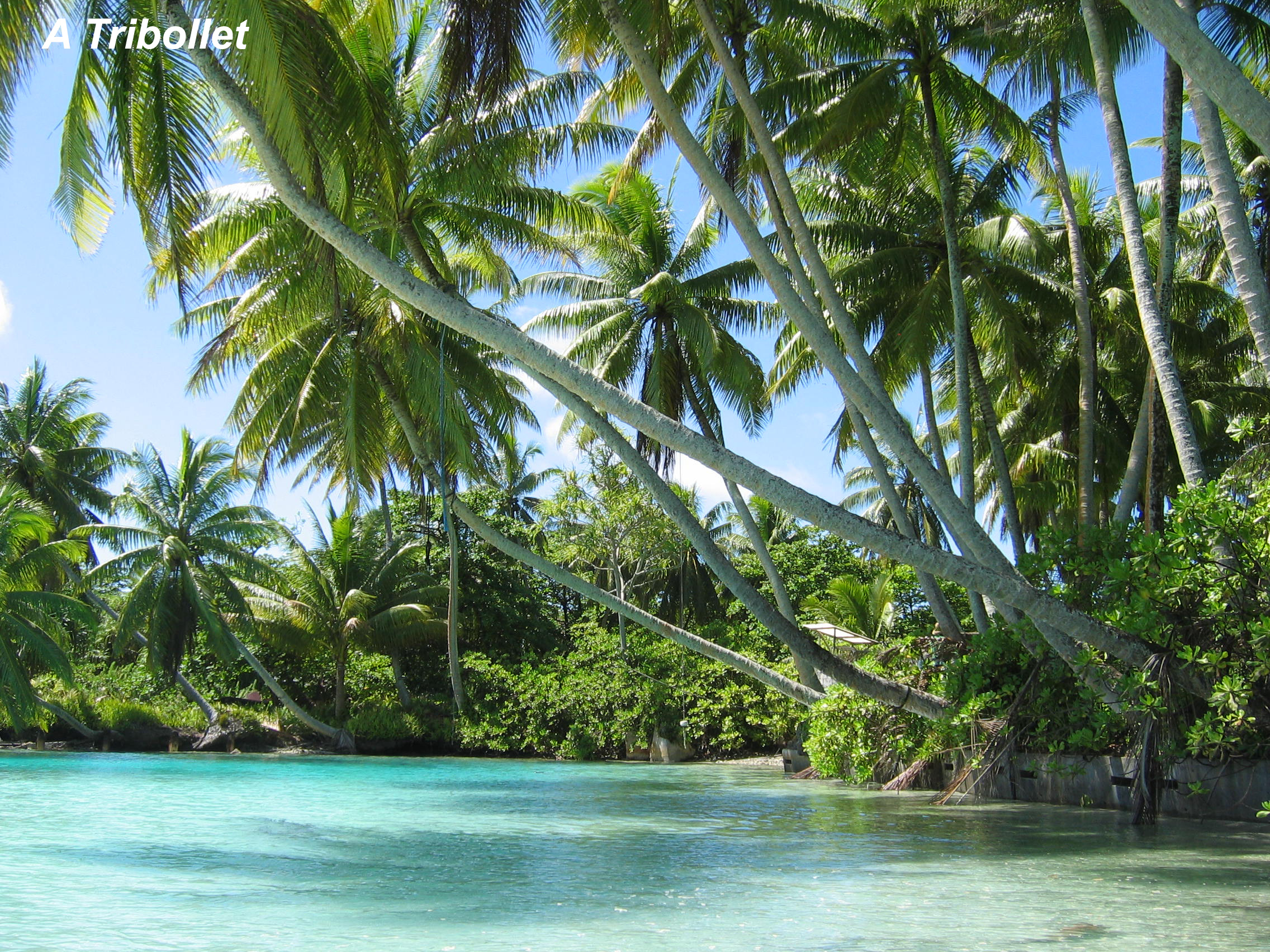
INTRODUCTION
Coral reefs are among the most
diverse and complexe marine ecosystems. Their
maintenance results from the balance between
constructive forces (principally growth and
calcification of corals and red coralline algae
-CCA) and destructive forces (mostly bioerosion).
Unfortunately this equilibrium is increasingly
threatened by anthropogenic activities and global
change factors such as ocean acidification and
rising sea surface temperature. Factors such as
overfishing, eutrophication, sedimentation, rising
sea surface temperature and pCO2 contribute to the
mortality of corals and an accelarated degradation
of reef framework putting in jeopardy the survival
of coastal and insular human populations. About 1/15
of the world population depends on coral reef
resources (food and economic resources).
Additonally, reefs form natural barriers protecting coasts
and tropical islands against storms, cyclones and
tsunami. These marine "oasis" are hot
spots of biodiversity and represent about 170 billions
of US dollars with a high potential for 'pharmaceutical'
molecules.
The rise of coral mortality induces an increase in surface areas available for colonization by the agents of bioerosion. Bioerosion is much more efficient on dead substrates than on live ones. Compare to constructive forces, bioerosion process has received relatively less attention. Recent works have emphasized the importance of studying simultaneously constructive and destructive forces in order to assess the state of health of coral reefs as well as their carbonate balance (see Tribollet and Golubic 2005 Coral Reefs (in Articles) and Pandolfi et al. 2011 Science vol. 333 for instance).
Healthy reef dominated by corals Healthy reef dominated by CCA Bleached corals
The rise of coral mortality induces an increase in surface areas available for colonization by the agents of bioerosion. Bioerosion is much more efficient on dead substrates than on live ones. Compare to constructive forces, bioerosion process has received relatively less attention. Recent works have emphasized the importance of studying simultaneously constructive and destructive forces in order to assess the state of health of coral reefs as well as their carbonate balance (see Tribollet and Golubic 2005 Coral Reefs (in Articles) and Pandolfi et al. 2011 Science vol. 333 for instance).
Healthy reef dominated by corals Healthy reef dominated by CCA Bleached corals
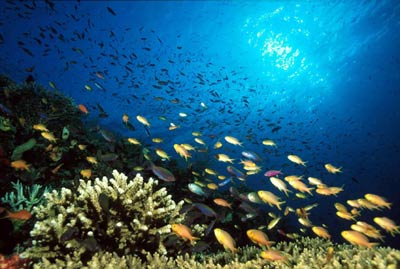
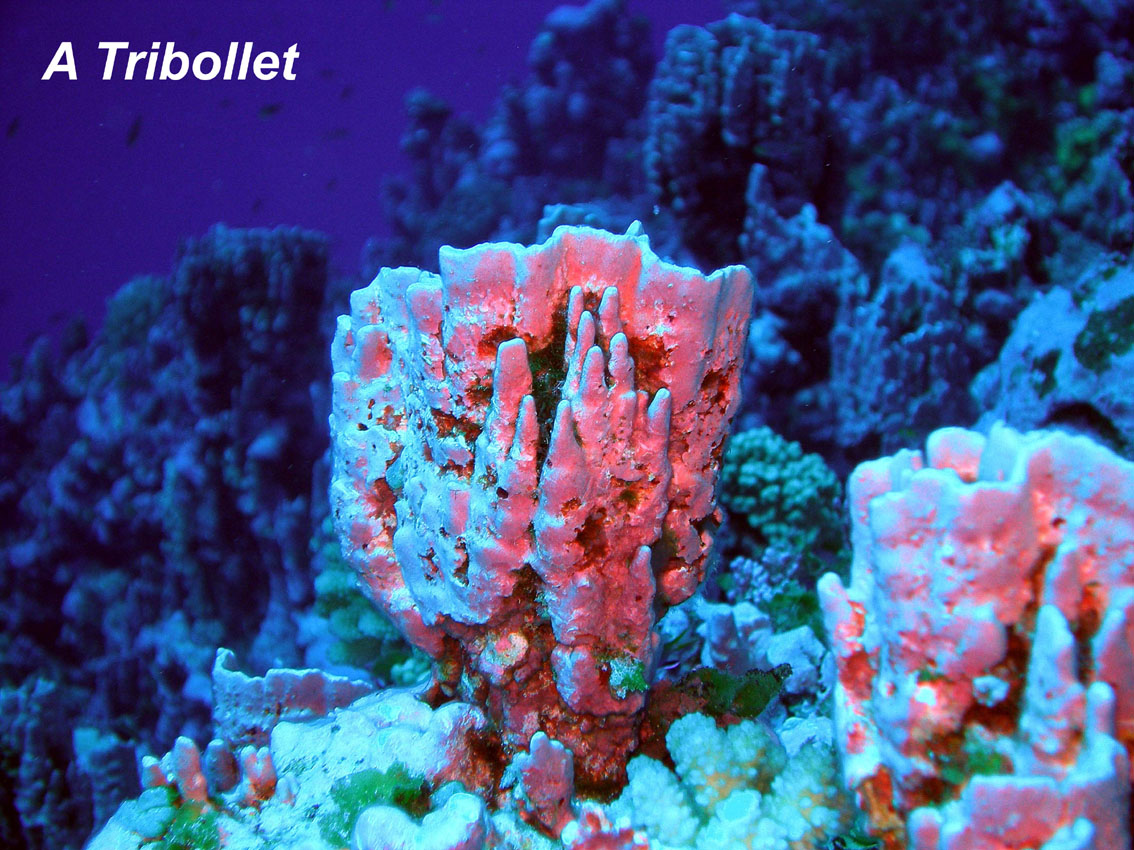
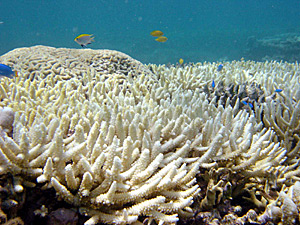
Bioerosion is due to a variety of
organisms, which comprises grazers (gastropods, sea
urchins and fish), macroborers (sponges,
polychaetes, bivalves...) and microborers
(cyanobacteria, algae, fungi). Bioerosion studies
assessed in particular taxonomy and ecological
characteristics of macroborers and grazers. In
contrast, a few studies focussed on boring
microflora ( microborers or eu-endolithic
organisms). In 2000s several studies
highlighted the important role played by boring
microflora in the carbonate biogeochemical cycle in
coral reef ecosystems. These agents are one of the main
actors of reef bioerosion (Tribollet & Golubic 2005,
Coral Reefs), especially the boring siphonous
chlorophyta of the genus Ostreobium (Tribollet 2008, Microbial
Ecology). They are important primary producers
(Tribollet et al. 2006) and are one of the main food
resources to grazers, especially grazing fishes
(parrotfishes) (Bruggemann et al. 1994, MEPS; Tribollet
& Golubic 2005; Grange et al. 2015). Recent
experiments showed that they positively respond to
eutrophication (Carreiro-Silva et al. 2005, 2009, Coral
Reefs & MEPS, respectively) and ocean acidification
(Tribollet et al. 2009, Global Biogeoch. Cycles)
suggesting that reefs may shift from net calcification
towards net dissolution before the end of the century.
More studies are needed to better predict the response
of boring microflora to anthropogenic and climatic
factors, and to better understand their roles in the
reef carbonate budget. Such studies will allow better
predicting the fate of coral reefs in the context of
climate change.
sea urchin boring sponges boring bivalves boring microflora
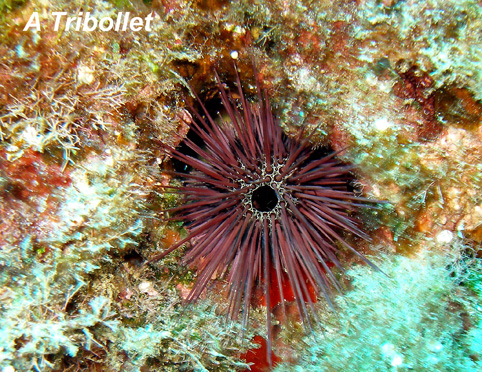
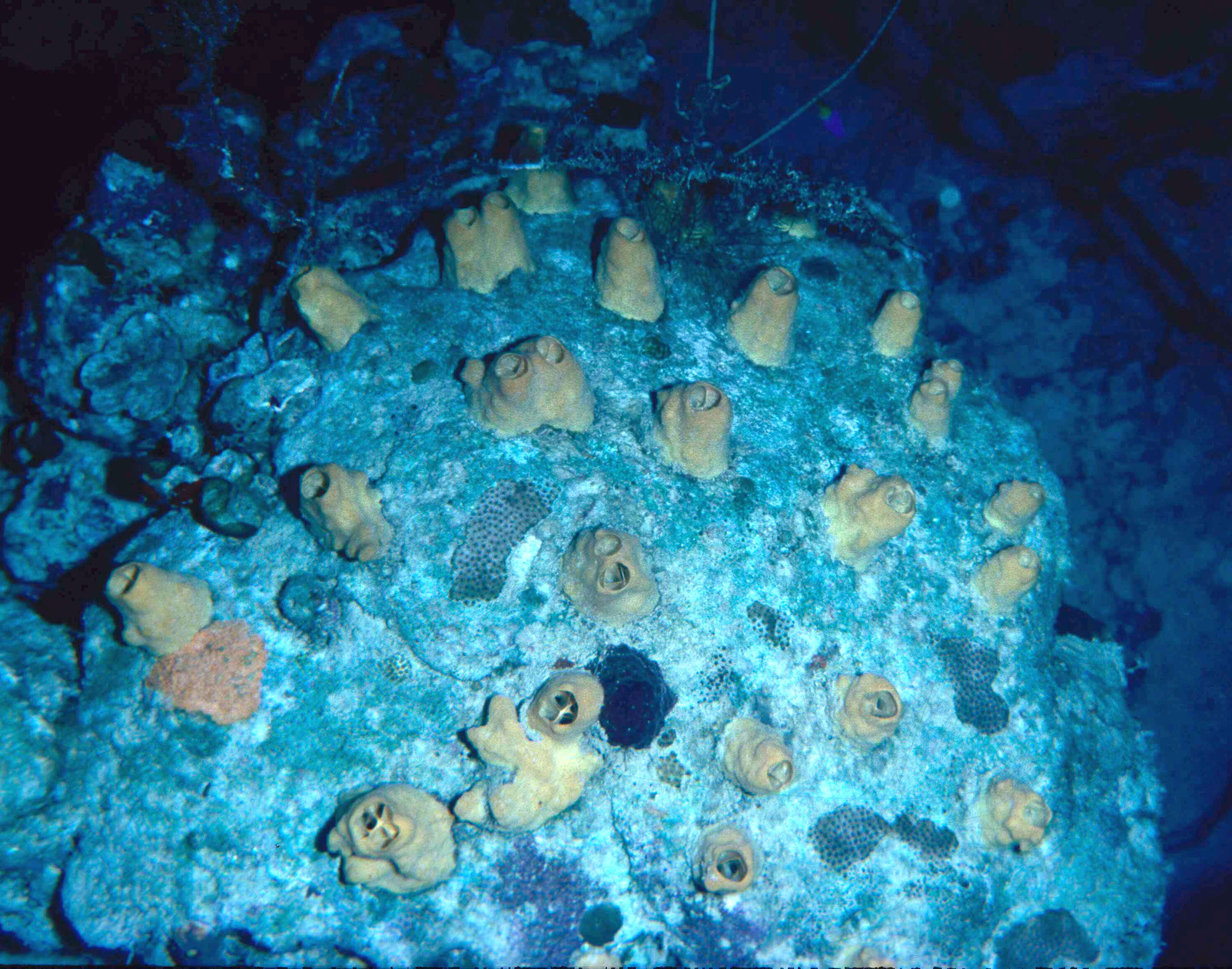
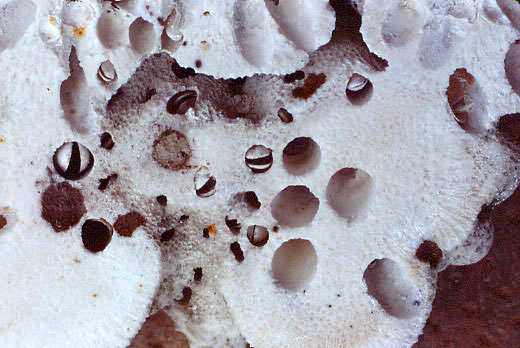
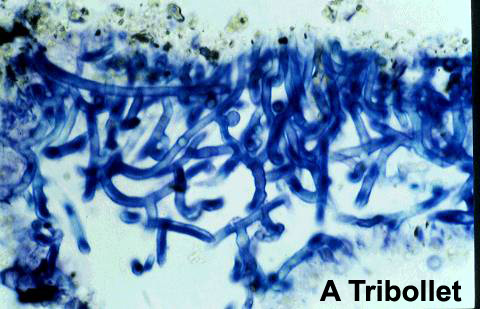
MAIN GOALS OF MY RESEARCH
The purpose of my research
is to highlight diversity and roles of boring microflora
in coral reef functioning in the context of global
changes.
More specifically, my research focuses on:
1- Boring chlorophytes' biodiversity
2- Dynamics of the biogenic dissolution process in reef carbonates resulting from the photosynthetic
and erosive activity of microboring flora
3- Interactions between boring microflora and their coral host
4- Interactions between boring microflora and grazers
4- Effects of environmental factors such as global warming, ocean acidification, eutrophication and other
pollutions on bioerosion processes.
See Articles
More specifically, my research focuses on:
1- Boring chlorophytes' biodiversity
2- Dynamics of the biogenic dissolution process in reef carbonates resulting from the photosynthetic
and erosive activity of microboring flora
3- Interactions between boring microflora and their coral host
4- Interactions between boring microflora and grazers
4- Effects of environmental factors such as global warming, ocean acidification, eutrophication and other
pollutions on bioerosion processes.
See Articles
AREAS OF STUDY
Most of my work has been carried out in the Pacific Ocean (Great Barrier Reef, New Caledonia, French Polynesia, Hawaiian Islands, Palau, Mariana Islands, ...). Since a few years, I am interested in studying reefs located in the Western Indian Ocean (Réunion Island, Mayotte, Eparses Islands...).
|
<>Site last update
: December 2018
|
|---|